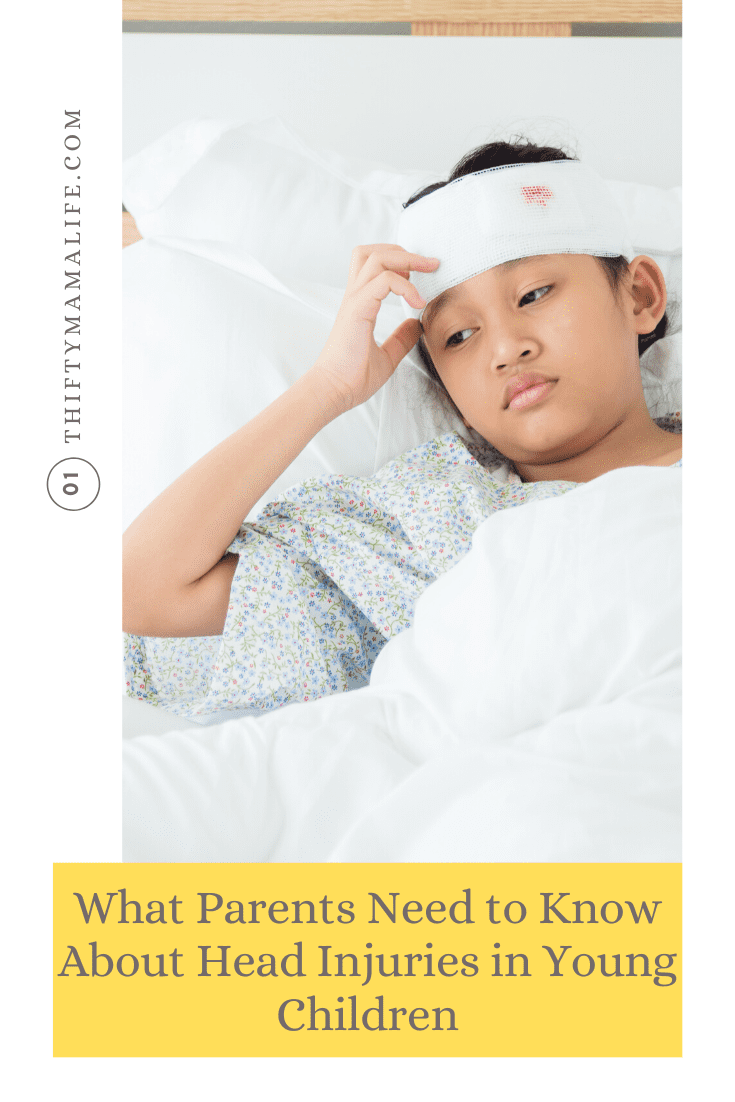Some of the links in this post are affiliate links. This means if you click on the link and purchase the item, I will receive an affiliate commission at no extra cost to you. All opinions remain my own.

Young children fall often because they are learning to walk and may not have the best balance. When they finally do learn to walk, they start climbing and taking chances that sometimes don’t end well. Unfortunately, some of these falls lead to head injuries that leave parents concerned about what to do next. Here’s what you need to know about head injuries in young children.
They Tend to Bleed—a Lot
You may be surprised that a head injury can bleed so much. All the blood can make you panic, but it’s important to know why head injuries bleed so much. There are a lot of blood vessels in the head. One-fifth of the blood pumping from your heart goes to your head, so when you sustain a head injury, there is likely going to be a significant amount of blood. Fortunately, a head injury that bleeds a lot doesn’t particularly mean a traumatic head injury has occurred. Apply pressure to the wound and see if the bleeding will stop. If there are no signs of concussion and the bleeding will stop after pressure is applied for a time, then everything is probably okay. Put antibiotic ointment on the injury and try not to worry.
When to Go to the Hospital
So how do you know when you should take your child to the hospital after a head injury? Definitely make your way to an emergency room if your child is unconscious, vomiting, or has a seizure. This could mean your child has suffered a traumatic brain injury (TBI). TBIs in children four and younger are occurring with increasing frequency, and are primarily caused by falls. Doctors can run tests to see how serious your child’s injury is and then decide on a plan for treatment. It’s important to keep your child as calm as possible on the way to the hospital and throughout the exam. Though you may feel panicked, try not to show it in front of your child. This will help him stay calm and allow the doctors to assess his condition without wondering if he is responding to your panic.
Practice Prevention When Possible
Kids are going to hit their heads from time to time. It’s part of childhood. However, there are things you can do to try to prevent TBIs in your child. Always use an appropriate car seat for your child anytime he is riding in a vehicle. Make sure your child wears a safety helmet when on a bike or skateboard. Place rails on the side of your child’s bed until he is old enough to not roll off the side. These small precautions may help keep your child from suffering a brain injury that could affect them for life.
Head injuries in children are scary, but many of them are mild and don’t have lasting impacts. Do what you can to prevent these injuries and know when to seek medical attention.
Here’s another article you might enjoy: The Mama’s Guide to Road Tripping Safety

Leave a Reply